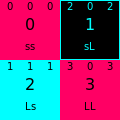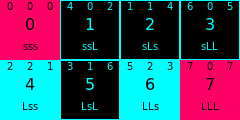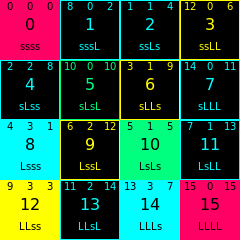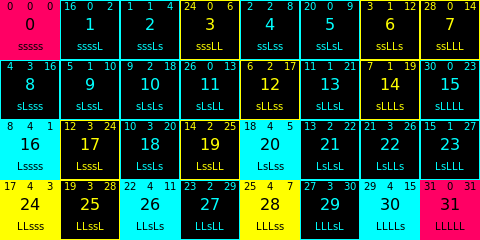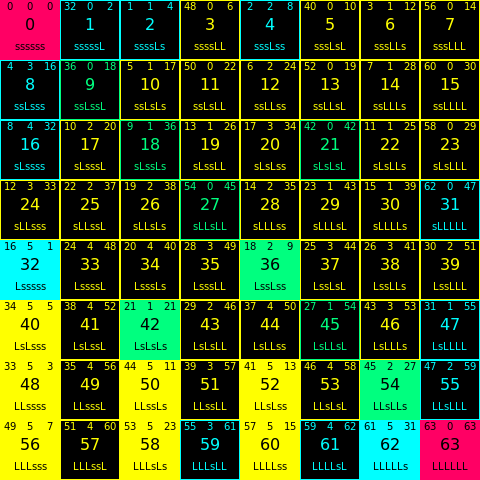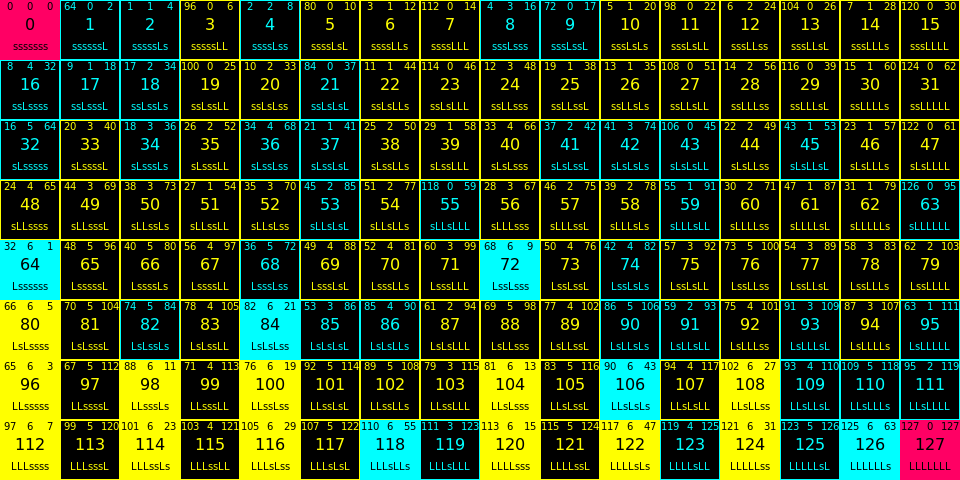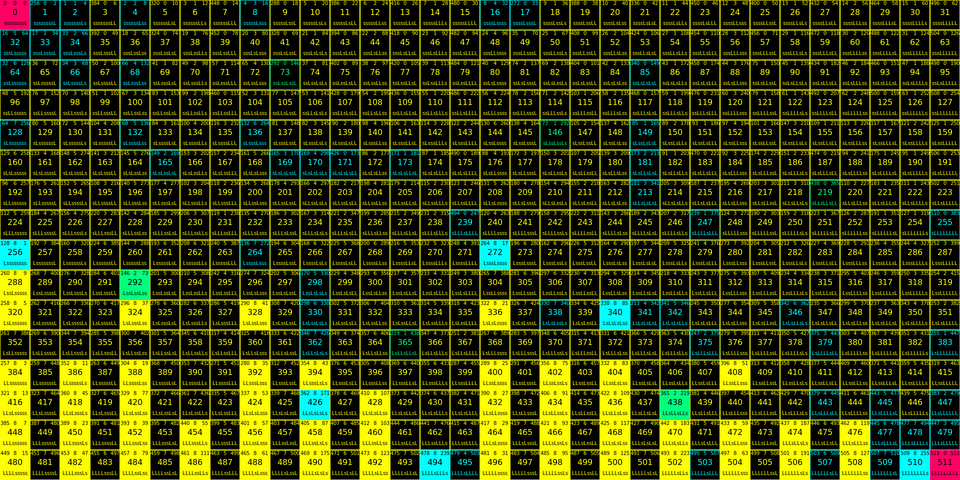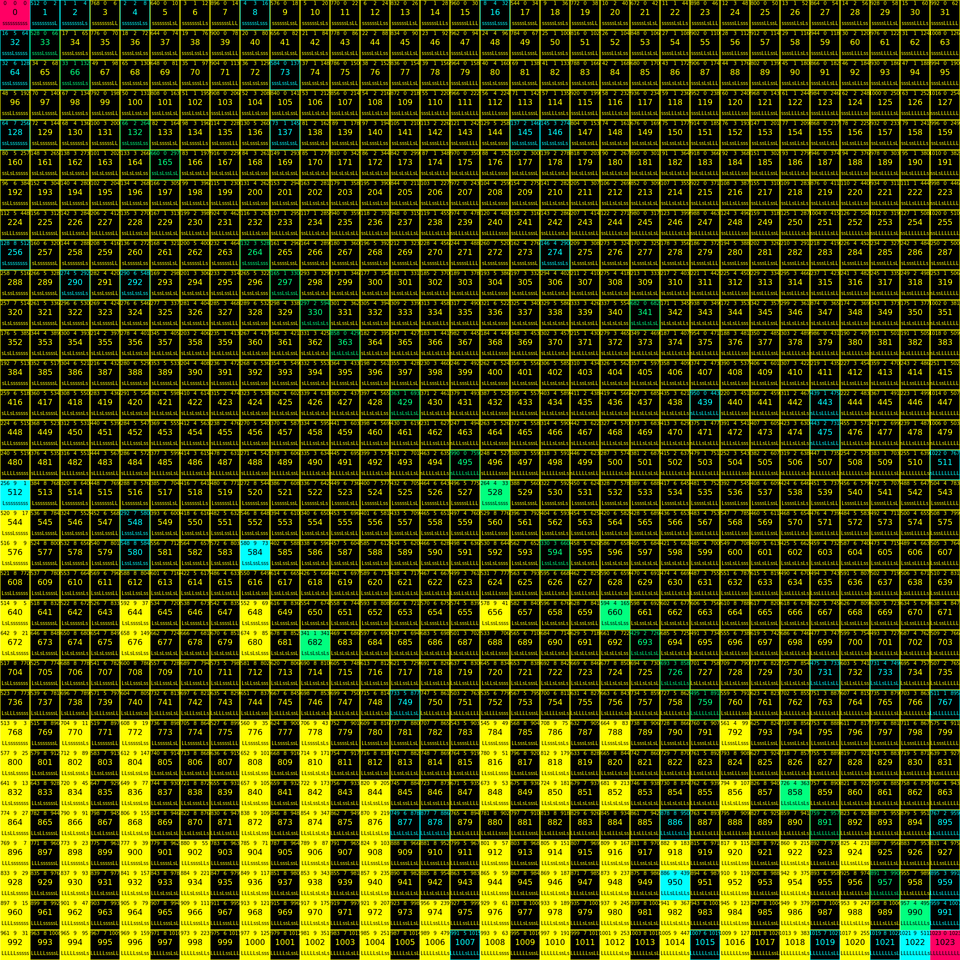User:Xenoindex/Scale Codes
Scales with two step sizes can be interpreted as binary numbers where large steps are encoded as 1 and small steps as 0. When converted to decimal each scale has a nice compact uniquely identifying number that allows scales to be ordered relative to each other.
Note that it's possible for scales with different numbers of step sizes to be encoded in a similar manner but with a different radix corresponding the the number of step sizes.
In decimal form scale codes lose their leading zeroes so to preserve all the information the number of notes (and potentially the radix) need to be somehow represented. It could be written as a list of numbers or maybe the code with the number of notes written in superscript like 11827 for lydian mode for example but I digress.
Each cell in the following diagrams have a "Scale Code" in the center and the Ls pattern it encodes below it. The numbers in the upper left and right corners are the scale codes the scale rotates to if you go down or up a brightness (respectively). The number in the top center is the scale's "U" UDP brightness. A feature of the encoding is you can tell how bright a scale is by how large the scale code is compared to the scale code of the scale's other modes. This is is how I'm determining the brightness of the MODMOSes which otherwise don't have a generator.
The color coding of each cell in the diagrams is as follows:
Blue - Single-Period MOS
Green - Multi-Period MOS
Yellow - MODMOS
Red - Degenerate case
Solid color cells are the brightest unique mode of their respective scale. Black cells are therefore all alternate modes of the solid colored cells.
Three step diagrams: (WIP)
On a final note it's worth mentioning that the number of unique scales (solid cells) for each number of notes follows this sequence: https://oeis.org/A000031
